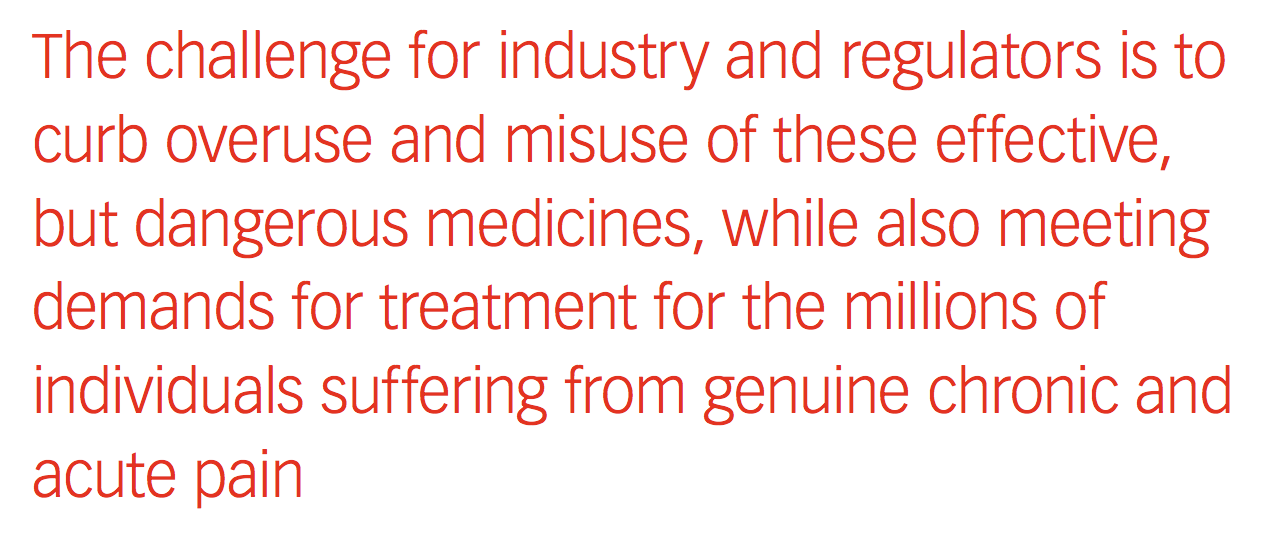Pharma Under Pressure to Curb Opioid Abuse
Pharmaceutical Executive
Policymakers seek to limit prescribing while also encouraging innovative R&D.
The public outcry for action to address opioid-related addiction and deaths has intensified demands for change in the prescribing, dispensing, labeling, and marketing of prescription pain medications. So far, more informative drug labels, prescriber education, and pharmacy monitoring have failed to reduce abuse, now linked to more than 30,000 deaths a year.
Jill Wechsler

To address these issues more directly, the White House has requested an additional $1.1 billion to support local and state drug treatment programs, including increased patient access to addiction treatments buprenorphine and naloxone. One consequence of cracking down on prescription drug abuse, unfortunately, has been a notable increase in the use of heroin and the even more dangerous illegal drug fentanyl, which has boosted demand for drugs to counter overdoses.
New guidelines from the Centers for Disease Control and Prevention (CDC) advise physicians to limit opioid prescriptions to only three-day supplies for individuals with severe pain that can’t be managed with less dangerous analgesics. States are establishing prescribing limits on opioids, and a new Massachusetts law requires drug manufacturers to collect and dispose of unwanted controlled substances to prevent diversion.
Pharma companies also face blame for driving the abuse epidemic through promotion of more powerful pain treatments, and some states are filing lawsuits that charge manufacturers with marketing dangerous pain medicines as safe and effective. Endo Pharmaceuticals, for example, recently paid a $200,000 fine to New York for allegedly claiming greater safety for the AD features of its Opana ER.
Congressional committees have held numerous hearings on the opioid abuse epidemic, and Congress has moved forward legislation that supports local abuse treatment programs and prevention strategies.

There’s also a proposal that seeks to fund substance abuse treatment programs through fees collected from opioid manufacturers related to the strength of their medications; another bill would extend exclusivity and offer other incentives for industry investment in R&D on safer pain medicines.
The challenge for industry and for regulators is to curb overuse and misuse of these effective, but dangerous medicines, while also meeting demands for treatment for the millions of individuals suffering from genuine chronic and acute pain. One strategy is to develop new pain medicines with abuse deterrent formulations (ADFs). FDA has approved approximately 35 extended-release/long-acting (ER/LA) therapies and five ER products with abuse deterrent features, but these medications are expensive and comprise only 10% of the market. About 90% of opioid prescribing is for some 175 immediate-release (IR) products, including more than 100 generics. One response is to encourage the development of less costly generic versions of long-acting ADFs, as well as and new non-opioid compounds able to manage pain more safely and economically (see sidebar on next page).
More meetings, warnings
Meanwhile, FDA is implementing an Opioid Action Plan, released in February to assure Congress that the agency can and will do more to ensure safer use of these powerful drugs. In the process, this initiative helped pave the way for Senate confirmation of Robert Califf as FDA commissioner. The Action Plan includes broader FDA consultation with advisory committees on the approval of new opioid formulations, stronger boxed warnings on drug labels, easier access to treatments for opioid overdoses, and expanded development and use of ADFs, including generic versions of these advanced treatments (view here).
To meet these goals, FDA has scheduled numerous meetings with outside advisors to consider the regulation and approval of new analgesics, especially those for children. At a March 1 session of FDA’s Science

Board, Califf and agency officials sought advice on developing more effective pain treatments, including ADFs. FDA’s pediatric advisory committee discussed pediatric development plans for prescription opioids at a meeting in April and will explore the issue in greater depth at a two-day session in September. In May, advisors are reviewing an application for an IR product that claims abuse-deterrent properties. Another meeting that month will examine the effectiveness of the agency’s current risk evaluation and mitigation strategy (REMS) for ER/LA opioids and whether to extend the program to the much greater number of IR products. And in June, two expert panels will jointly weigh applications for two new ER painkillers featuring AD properties.
FDA also seeks to strengthen warnings on the labels of all IR opioid products, similar to labeling changes made for ER opioid analgesics in 2013. A new policy published in March will include boxed warnings on labels to heighten prescriber awareness of the high risk of misuse, abuse, overdose and death associated with these therapies (view here). The revision further cautions women not to take these drugs chronically during pregnancy and calls for both IR and ER painkillers to carry safety information about the risk of drug interactions that can have serious adverse effects. Yet FDA stopped short of setting specific dosing recommendations or maximum doses for pain medications, despite pressure to do so from state and public health authorities.
As with many biopharmaceutical treatment issues, innovation leading to safer non-opioid pain therapies and more controlled drug delivery methods may help address these issues. Baltimore-based Centrexion Therapeutics, headed by former Pfizer chairman Jeffrey Kindler and former Celgene chief Sol Barer, made waves a few weeks ago by acquiring three experimental pain compounds from Boehringer Ingelheim and announcing further clinical trials for an injectable, synthetic capsaicin to treat chronic osteoarthritis knee pain. Investors appear interested in research initiatives seeking better, safer treatment options, and more entities are emerging to move the field forward.
Jill Wechsler is Pharmaceutical Executive’s Washington correspondent. She can be reached at jill.wechsler@ubm.com

Addressing Disparities in Psoriasis Trials: Takeda's Strategies for Inclusivity in Clinical Research
April 14th 2025LaShell Robinson, Head of Global Feasibility and Trial Equity at Takeda, speaks about the company's strategies to engage patients in underrepresented populations in its phase III psoriasis trials.
Beyond the Prescription: Pharma's Role in Digital Health Conversations
April 1st 2025Join us for an insightful conversation with Jennifer Harakal, Head of Regulatory Affairs at Canopy Life Sciences, as we unpack the evolving intersection of social media and healthcare decisions. Discover how pharmaceutical companies can navigate regulatory challenges while meaningfully engaging with consumers in digital spaces. Jennifer shares expert strategies for responsible marketing, working with influencers, and creating educational content that bridges the gap between patients and healthcare providers. A must-listen for pharma marketers looking to build trust and compliance in today's social media landscape.